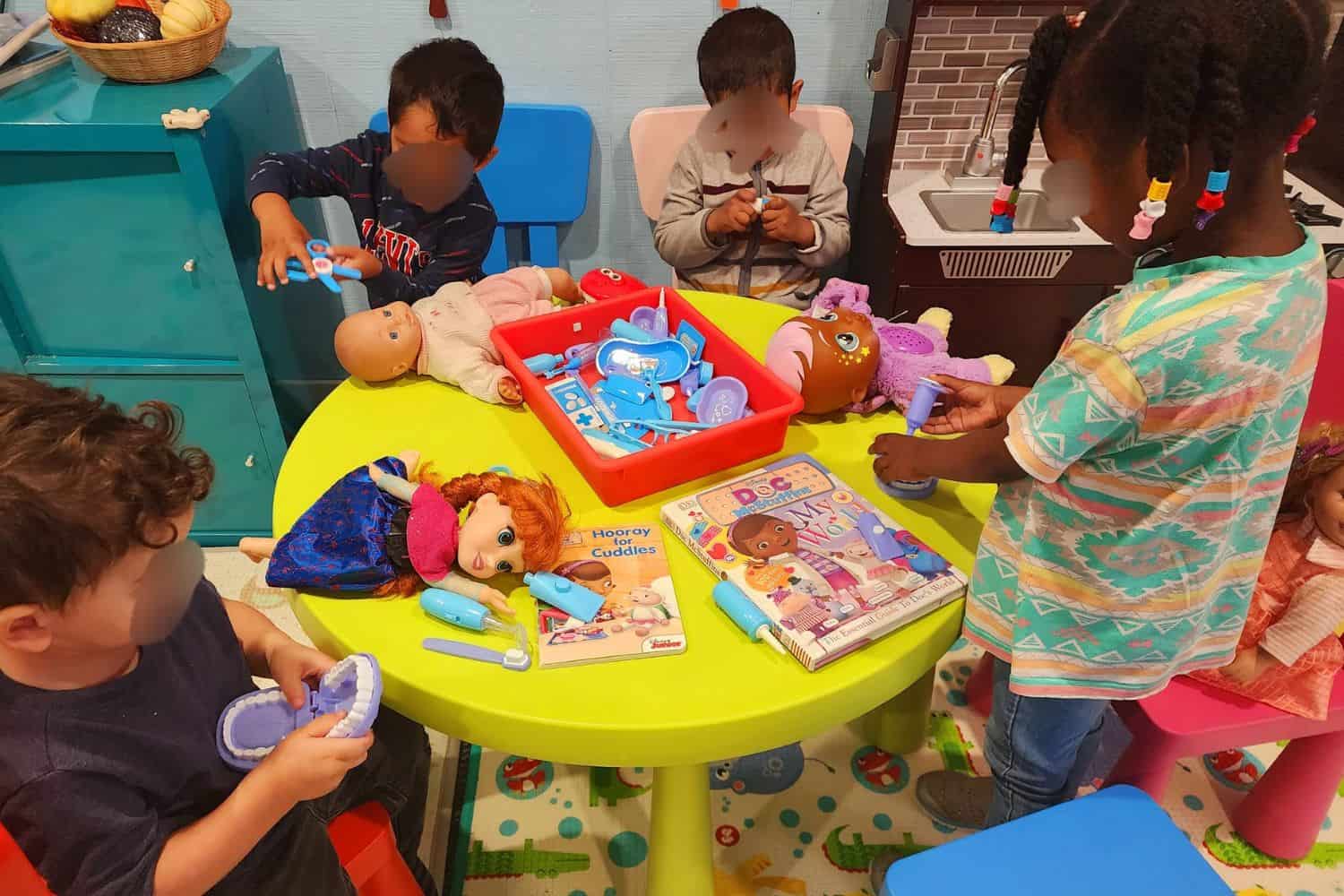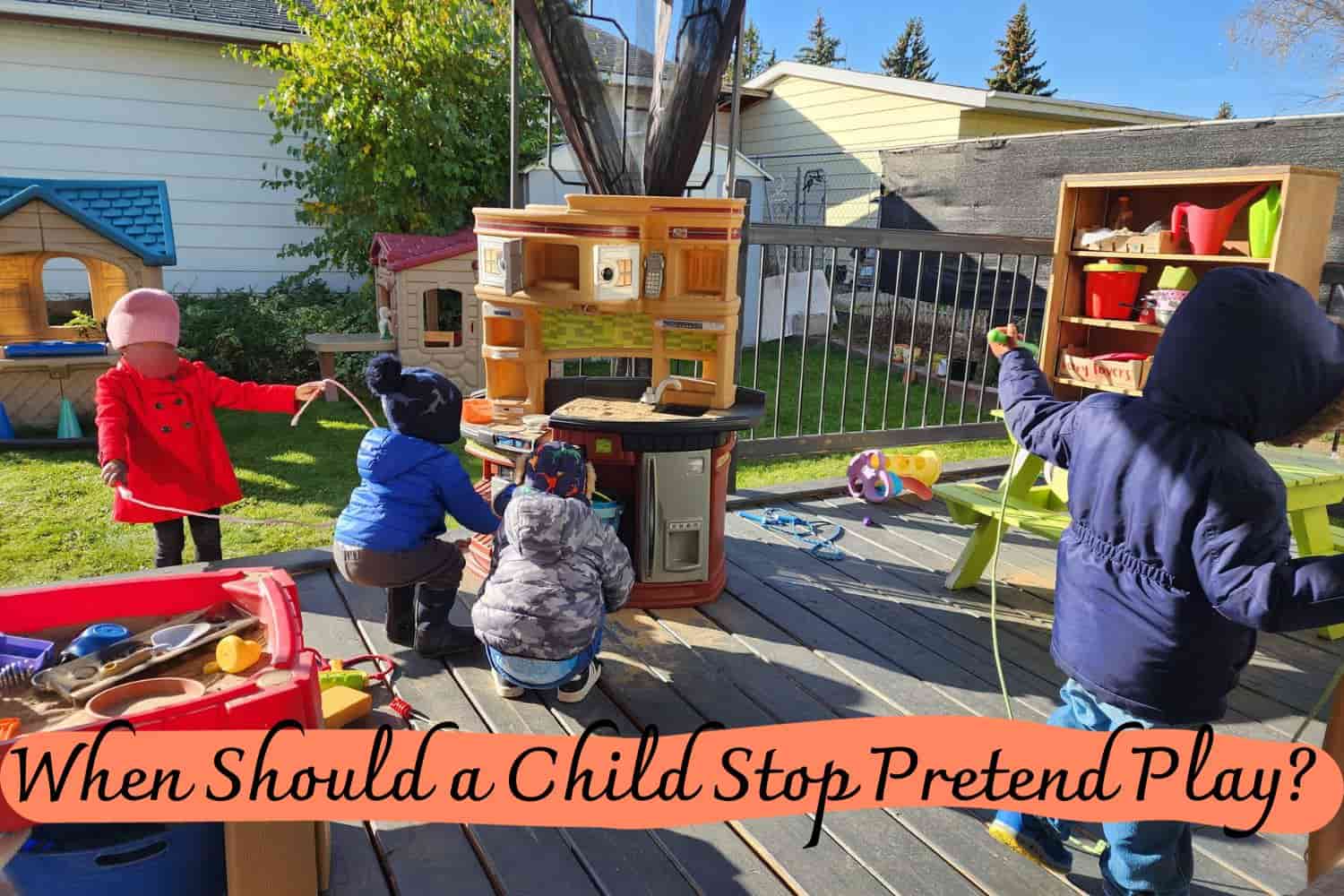Wondering – When should a Child Stop pretend play with dolls and action figures? Here are the key signs that your child may be ready to move on from pretend play.
When Should a Child Stop Pretend Play?
When it comes to pretend play, children seem to be naturally drawn to this activity. It’s a great way for kids to explore their imagination and creativity as they act out different roles that capture their interest and provide them with hours of fun.
But when should a child stop pretend play?
While most kids stop engaging in imaginative play around 10 or 12, some continue this enriching activity for a longer time.
Here we’ll look at what potential age limits could be considered, the benefits of childhood pretend play, and how parents can help foster a positive imaginative environment while also fostering healthy development habits once children reach an appropriate age limit.
The Magic of Pretend Play

Discover the world of pretend play, where kids unleash their creativity, step into new roles, and dive into fictional adventures. By pretending to be someone else and exploring imaginary realms, children bring their wildest ideas to life through play. Plus, it’s not just about having fun – pretend play helps kids develop their theory of mind.
Understanding Others: The Power of Pretend Play
Empathy, perspective-taking, and understanding different beliefs – these are all skills that children can learn through pretend play. By stepping into the shoes of another person, kids start to consider what they may think, feel, and believe. This fascinating process paves the way for a deeper understanding of different perspectives, setting the stage for valuable learning experiences through Montessori-style pretend play.
Stepping into a New World: Age 5 and Beyond
Around the age of 5, children begin to master the art of dramatic play. They start to grasp the concept that others may see things they can’t and hold different beliefs about the world. It’s a pivotal moment in their development as they enter into a world of make-believe, unearthing new levels of imagination and creativity.
Unveiling the Many Faces of Pretend Play
Make-believe, dramatic play, fantasy play, imaginative play, symbolic play – these are all different terms for the same magical experience. Whether children engage in pretend play alone or with friends, in a simple or complex way, the key is to let their imaginations run wild and have a blast.
When Should a Child Stop Pretend Play?
Typically around the ages of ten to twelve, children begin to phase out pretend play. They become more focused on activities like sports and school.
That said, some kids may continue to engage in imaginative play for a longer time – and that’s perfectly okay. The important thing is to let your child lead the way and only step in if you notice any concerns or disruptions in their social development.
At What Age Does Imaginative Play Come to an End?
In stage four, we dive into creating fictional documents and cultures to build a make-believe world. Stage five follows, taking the world by storm.
However, this peak of creative play usually occurs around age 9 and diminishes as children enter adolescence. The reasons behind why children engage in complex and time-consuming pretend play remain uncertain.
How Parents Can Help
As children reach an appropriate age limit for pretend play, parents can help foster healthy development habits while still encouraging their children’s imagination. Here are a few tips:
- Introduce new activities and hobbies that align with your child’s interests and strengths.
- Encourage creative expression through drawing, painting, or writing stories.
- Enroll your child in extracurricular activities where they can explore their interests and interact with peers.
- Allow for downtime to relax and recharge without any structured activities.
- Continue to support your child’s imaginative play if they still enjoy it, but also encourage them to try new things and broaden their horizons.
Conclusion
Pretend play is a magical experience that can benefit children in many ways, from developing empathy and understanding others to fostering imagination and creativity.
While most kids stop engaging in pretend play around the ages of 10-12, some may continue to partake in this enriching activity for a longer time.
As parents, it’s essential to support our children’s interests and foster healthy development habits once they reach an appropriate age limit for pretend play. Ultimately, the key is to let our children lead the way and find ways to encourage them to explore their passions while also promoting well-rounded growth and development.
So let your child’s imagination run wild, and watch as they create new worlds and embark on exciting adventures through the magic of pretend play.
So instead of worrying about when your child should stop pretend play, focus on nurturing their creativity and supporting them in all their endeavors. The benefits of pretend play will continue to impact your child long after they have outgrown it.
Thanks for reading our article When Should a Child Stop Pretend Play? If you want to know more information, visit our website here.
Read more:

